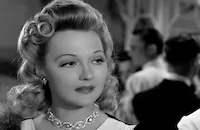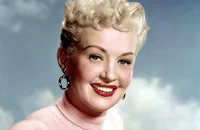The story idea was credited to the 1922 play Shore Leave, about a sailor who falls in love during a 24-hour leave. The play had already been adapted to musical form in 1925 as Hit the Deck, with such Vincent Youmans hits as "Sometimes I'm Happy" and "Hallelujah." Both versions were filmed: the straight play in 1925 and the musical in 1930. Nor would the Astaire-Rogers version mark the plot's last appearance. Hit the Deck, complete with Youmans' score, was given an official remake in 1955 with Jane Powell, Debbie Reynolds, Ann Miller, Vic Damone, Russ Tamblyn and Tony Martin (who had been an extra back in 1936). It would inspire just about every Navy musical ever made, particularly two with different scores, The Fleet's In (1942), with Dorothy Lamour, William Holden, Eddie Bracken and Betty Hutton; and Here Come the Waves (1944), with Hutton, Bing Crosby and Sonny Tufts.
Producer Pandro S. Berman assigned the script and score to writers Dwight Taylor and Allan Scott and songwriter Irving Berlin, all of whom had just finished work on what would turn out to be Astaire and Rogers' biggest hit, Top Hat (1935, it opened to SRO crowds and raves as Follow the Fleet was going into production). And just to confuse the story credits more, the writers drew elements from Roberta (1935), in which Fred and Ginger had provided comic relief to a serious love story pairing Randolph Scott with Irene Dunne. The studio wanted to cast Dunne in the new film as Rogers' sister and Scott's love interest, but she had other commitments. As a result, some numbers Berlin had written for her were cut from the score and her big ballad, "Let's Face the Music and Dance," became one of Fred and Ginger's most memorable duets.
As was his custom, Astaire began working on the choreography months before filming started. Helping were choreographer Hermes Pan and pianist-arranger Hal Borne, who had been working with him since the film that introduced him to Rogers, Flying Down to Rio (1933). The comic dance duel "I'm Putting All My Eggs in One Basket" was created to replace a scene in which the stars were to insult each other while practicing a dance routine. Instead, Astaire and Rogers developed a genial collection of terpsichorean mistakes that made it one of the screen's best comic dance numbers. By this point, Rogers had grown so much as a dancer that they even trusted her with a solo routine, a stirring tap solo to "Let Yourself Go."
For the grand finale, a show-within-a-show set on a battleship, the two played a losing gambler and a woman of mystery dancing to "Let's Face the Music and Dance." On the day of shooting, Rogers showed up wearing a beaded dress that weighed 25 pounds. Although Astaire approved it, they both had to adjust to its weight, particularly when she spun around. Astaire wanted to do the dance in one long take, but the first time they tried it, he forgot to dodge the sleeves after one spin and they hit him in the face, almost knocking him out. He managed to complete the take, but could barely remember what he'd done. So they spent the rest of the day doing more than 20 additional takes, none of which worked. The next day they were ready to do it again when they watched the first take and realized it was perfect. Fans still watch for the moment Rogers' costume decks her dancing partner.
Follow the Fleet provided early opportunities for three budding stars. In his film debut, extra Tony Martin almost got the chance to sing "Let's Face the Music and Dance" until the production team decided to give the number to Astaire. He would have to leave RKO to achieve musical stardom in such pictures as Sing, Baby, Sing (1936) with future wife Alice Faye. To replace Dunne, RKO cast popular big-band singer Harriet Hilliard, though she had to dye her blonde hair brown so as not to compete with Rogers. Critics were less than impressed, and many television prints cut her two numbers, but she would go on to fame years later under her married name, Harriet Nelson. And in her largest role to date, newcomer Lucille Ball scored laughs as a wisecracking dancer. Ball had only been with the studio a year, and had almost been dropped until Rogers' mother, acting coach Lela Rogers, threatened to quit if the studio didn't recognize her star potential. Two decades later, Ball would end up buying the RKO lot. In 1936, however, she was comforted by the fact that Follow the Fleet brought her first fan letter: "You might give the tall, gum-chewing blonde more parts and see if she can't make the grade - a good gamble."
Producer: Pandro S. Berman
Director: Mark Sandrich
Screenplay: Dwight Taylor, Allan Scott, based on the play, Shore Leave by Hubert Osborne
Cinematography: David Abel
Art Direction: Van Nest Polglase, Carroll Clark
Music: Irving Berlin
Principal Cast: Fred Astaire (Bake Baker), Ginger Rogers (Sherry Martin), Randolph Scott (Bilge Smith), Harriet Hilliard (Connie Martin), Astrid Allwyn (Iris Manning), Lucille Ball (Kitty Collins), Betty Grable (Singer), Tony Martin (Sailor).
BW-111m. Closed captioning.
by Frank Miller

































